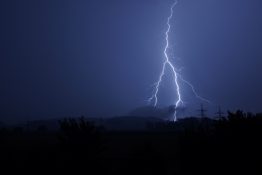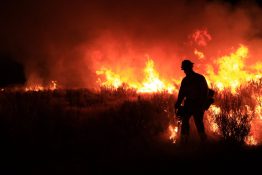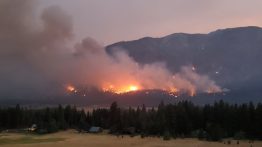As glaciers worldwide retreat due to climate change, managers of national parks need to know what’s on the horizon to prepare for the future. A new study from the University of Washington and the National Park Service measures 38 years of change for glaciers in Kenai Fjords National Park, a stunning jewel about two hours south of Anchorage. The study, published Aug.
Read more at UW News »Artificial intelligence can create better lightning forecasts
Lightning is one of the most destructive forces of nature, as in 2020 when it sparked the massive California Lightning Complex fires, but it remains hard to predict. A new study led by the University of Washington shows that machine learning — computer algorithms that improve themselves without direct programming by humans — can be used to improve lightning forecasts. Better lightning forecasts could help to prepare for potential wildfires, improve safety warnings for lightning and create more accurate long-range climate models.
Read more at UW News »ShakeAlert helps students learn to Drop, Cover and Hold On
On October 21, thousands of students, teachers and staff in the Stanwood Camano School District and beyond “Dropped, Covered and Held On” at exactly 10:21 a.m., emulating the synchronicity of a well-rehearsed dive team. The Great ShakeOut Earthquake Drill, held around the globe annually and supported locally by the University of Washington’s Pacific Northwest Seismic Network (PNSN), is a coordinated effort to practice what to do in the event of an actual earthquake.
Read more »Dryer, warmer night air is making some Western wildfires more active at night
Firefighters have reported that Western wildfires are starting earlier in the morning and dying down later at night, hampering their ability to recover and regroup before the next day’s flareup. A study by University of Washington and U.S. Forest Service scientists shows why: The drying power of nighttime air over much of the Western U.S. has increased dramatically in the past 40 years.
Read more at UW News »New report: State of the science on western wildfires, forests and climate change
Exceptionally hot and dry weather this summer has fueled dozens of wildfires across the western U.S., spewing smoke across the country and threatening to register yet another record-breaking year. More than a century of fire exclusion has created dense forests packed with excess trees and brush that ignite and spread fires quickly under increasingly warm and dry conditions. Scientists largely agree that reducing these fuels is needed to make our forests and surrounding communities more resilient to wildfires and climate change.
Read more at UW News »





